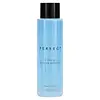What's inside
What's inside
 Benefits
Benefits

No benefits
 Concerns
Concerns

 Ingredients Side-by-side
Ingredients Side-by-side

Water
Skin ConditioningCyclopentasiloxane
EmollientCyclohexasiloxane
EmollientButylene Glycol Dicaprylate/Dicaprate
EmollientDipropylene Glycol
HumectantIsohexadecane
EmollientSodium Chloride
MaskingBenzyl Alcohol
Perfuming1,2-Hexanediol
Skin ConditioningCaprylyl/Capryl Glucoside
CleansingParfum
MaskingEclipta Prostrata Extract
Skin ConditioningSea Water
HumectantDipotassium Glycyrrhizate
HumectantButylene Glycol
HumectantDisodium EDTA
Tromethamine
BufferingCI 61565
Cosmetic ColorantLavandula Angustifolia Extract
Skin ConditioningBorago Officinalis Extract
EmollientCentaurea Cyanus Flower Extract
AstringentChamomilla Recutita Flower/Leaf Extract
AntimicrobialWater, Cyclopentasiloxane, Cyclohexasiloxane, Butylene Glycol Dicaprylate/Dicaprate, Dipropylene Glycol, Isohexadecane, Sodium Chloride, Benzyl Alcohol, 1,2-Hexanediol, Caprylyl/Capryl Glucoside, Parfum, Eclipta Prostrata Extract, Sea Water, Dipotassium Glycyrrhizate, Butylene Glycol, Disodium EDTA, Tromethamine, CI 61565, Lavandula Angustifolia Extract, Borago Officinalis Extract, Centaurea Cyanus Flower Extract, Chamomilla Recutita Flower/Leaf Extract
Ingredients Explained
These ingredients are found in both products.
Ingredients higher up in an ingredient list are typically present in a larger amount.
Caprylyl/Capryl Glucoside is an alkyl glucoside. This just means it is creating by reacting alcohol and sugar. It is a cleansing and foaming ingredient.
Caprylyl/Capryl Glucoside helps remove the dirt, oil, and other pollutants from your skin.
Cyclopentasiloxane, or D5, is a silicone used to improve texture of products and trap moisture.
D5 is considered lightweight and volatile. Volatile means it evaporates quickly after application. Once evaporated, D5 leaves a thin barrier that helps keep skin hydrated.
It is also an emollient. Emollients help soften the skin and prevent water loss. Silicones create a silky texture in products. D5 helps other ingredients become more spreadable.
Studies show D5 is safe to use in skincare products. We recommend speaking with a skincare professional if you have concerns.
Learn more about CyclopentasiloxaneDisodium EDTA plays a role in making products more stable by aiding other preservatives.
It is a chelating agent, meaning it neutralizes metal ions that may be found in a product.
Disodium EDTA is a salt of edetic acid and is found to be safe in cosmetic ingredients.
Learn more about Disodium EDTAChances are, you eat sodium chloride every day. Sodium Chloride is also known as table salt.
This ingredient has many purposes in skincare: thickener, emulsifier, and exfoliator.
You'll most likely find this ingredient in cleansers where it is used to create a gel-like texture. As an emulsifier, it also prevents ingredients from separating.
There is much debate on whether this ingredient is comedogenic. The short answer - comedogenic ratings don't tell the whole story. Learn more about comegodenic ratings here.
The concensus about this ingredient causing acne seems to be divided. Research is needed to understand if this ingredient does cause acne.
Scrubs may use salt as the primary exfoliating ingredient.
Learn more about Sodium ChlorideWater. It's the most common cosmetic ingredient of all. You'll usually see it at the top of ingredient lists, meaning that it makes up the largest part of the product.
So why is it so popular? Water most often acts as a solvent - this means that it helps dissolve other ingredients into the formulation.
You'll also recognize water as that liquid we all need to stay alive. If you see this, drink a glass of water. Stay hydrated!
Learn more about Water